|
This important article by Dr. Hildegarde Staninger from 2009 reveals research that aerial spraying of nanoparticles leads verifiably to Cholinesterase inhibition. This is the very mechanism that was attributed to COVID19 and later generated the theory that snake venom peptides are involved in creating the symptoms of COVID.
Disorders of the Cholinergic System in COVID-19 Era—A Review of the Latest Research
Viable question arose when many scientists around the world doing Mass Spectroscopy did not find Phosphorus or Nitrogen in the COVID19 vials - both elements are needed to build mRNA.
If there was possibly no mRNA in many vials, then there was no spike protein produced. However, the same toxicity can be created through nanoparticles that are either sprayed via geoengineering biological warfare operations or injected via the COVID19 shots. This is why the review of this research is so important and I want to explain the parallels of the advanced nanomaterials sprayed via geoengineering and the COVID19 bioweapons. The important understanding is that the toxicity is the same as organophosphate and carbamate pesticides which were developed out of warfare agents used in world war one and two. Specifically, the Germans used Phosgene gas in 1915:
Here is the CDC Chemical emergencies website that states that military Phosgene is used to make PLASTICS AND PESTICIDES.
The side effects of pesticide spraying and being murdered in the wars by phosgene are the same, as they work through cholinesterase inhibition. Attacking this mechanism can be hence categorized as biochemical warfare. The same poisoning can be induced by toxic nanoparticles. Please note that it has been shown that nanoparticles are 100x more neurotoxic than pesticides. Snake venoms act in the same way, however expanding our view to other causative agents will help us understand reasons for mitigation strategies.
Specifically, neurotoxicity from nanoparticle poisoning can be effectively treated by EDTA, which has been successfully used for treatment of wide variety of neurotoxic symptoms, as well as neurodegenerative diseases.
EDTA Chelation Therapy for the Treatment of Neurotoxicity
EDTA Chelation Therapy in the Treatment of Neurodegenerative Diseases: An Update
Please read this carefully, as the symptoms discussed exactly align with long COVID and the COVID19 “vaccine” injury symptoms. While the article is highly technical, you can see clearly that the toxicity from nanoparticles exactly mimic the symptoms of COVID19 - and now we know that those are the same symptoms associated with toxicity from snake venoms, phosgene gas, plastics and pesticides. Given the evidence of nanoparticles in the COVID19 shots we have to consider detoxification from nanoparticles via EDTA plus Vitamin C as a key treatment strategies. Nicotine can be used in addition, but it does not eleminate the causative agent from the body, specifically toxic nanoparticles like Aluminum, radioactive Uranium, Gadolinium and others - remember the Argentinian group of Dr Sangorrin found 54 undisclosed toxic nanoparticles in the COVID19 shots. Discussion of Argentinian C19 Bioweapon Analysis Finding Building Blocks Of Self Assembly Nanotechnology
Hence with Nicotine we have purely a symptom based approach and not a curative reversal potential by eleminating the causative agent from the body.
In future posts, I will show the detailed chemical analysis of mesogens and filaments that are silica based. I have warned against using Zeolite due to these results and continue to do so. Dr. Staninger also has advocated against using Zeolites for treatment.
EXPOSURE TO AERIAL EMISSIONS OF NANO COMPOSITE MATERIALS RESULTED IN CHOLINESTERASE INHIBITION
by Hildegarde Staninger, Ph.D., RIET-1, Industrial Toxicologist/IH & Doctor of Integrative Medicine. Integrative Health Systems,
ABSTRACT: Cholinesterase inhibition has been associated with exposure to organophosphate and carbamate pesticides, since their creation during World War I and II. Traditionally, they cause severe neurological disorders that can paralyze not only insects but humans. Individuals are usually exposed by misuse of pesticide applications or through aerial spraying. The cholinesterase inhibition effects for chronic exposure or multiple acute exposures are expressed in acetyl cholinesterase, enzyme (AChE) activities inhibition. The integration of nano particulates in various nano composite materials, such as aerial hydrogels and other similar materials used in aerial vector sprays, weather modification and sensor grids, resulted in the individual http://www.skeltontaintorabbott.net/news/85/77/Skelton-Taintor-Abbott-Wins- Landmark-Smart-Meter-Case.html having as high as 96.2 % cholinesterase inhibition and detectable readings of nano composite material present. Confirming Ocean University, China’s findings in the June 2009 issue of Chemical Sensitivities, that nano particles are 100 times more toxic than a single molecule of a pesticide, such as Malathion, propoxopur or benomyl.
Background:
During the summer of 2007 in Phoenix, Arizona, a female age 51 was exposed to aerial spraying for weather modification and vector control (mosquito) as performed through G-1 requirements and Project Earth Scope1. She was at home and had her windows open and went outside of her home to see what was happening. She immediately felt a burning and tingling sensation and became ill. After numerous analytical testing and physician evaluations, it was determined she was exposed at a minimum to nano composite material and Sencil™1 technology due to specimens of the materials taken from her body appeared to be hair follicles, but were not upon laboratory analysis. The sample melted at 650o C, while human hair melts at just above 135oC and synthetic hair melts at approximately 2250 C.
Here you can see the Silica based Sencil nanotechnology mentioned:
Discussion:
Primary concern was individual’s symptoms, which coincided with chronic acetyl cholinesterase (AChE) enzyme inhibition in the circulating red blood cells that are depository regulators for the various soft tissue organs within the body.2 Once the levels of the red blood cell values become very high they trigger the release of plasma cholinesterase to replenish any future inhibition roller coastering effects. The roller coatarring affects can be very sudden or gradual; all depending upon the amount of recovery of the enzyme into the organ systems and the trigger points of specific sensor modulating factors within the cell membranes and nuclear membrane.
A comprehensive toxicological analysis of the results using the standard mathematical calculations to determine the percent (%) inhibition of acetylcholinesterase was determined from initial testing in 2008 to present 2009
values. The values were calculated and based upon the most current cholinesterase value for red blood cells and plasma to show a linear time relationship and medically observations by her treating physician/naturopath and toxicologist from the chronic effects of cholinesterase inhibition and its toxicological neurological mechanisms of action.
On August 15, 2009 her individual value for cholinesterase, plasma 2019 and RBC 5774 IUs. A comparative table is stated below, based on each date’s value and compared to August 15, 2008 (note exactly one year from initial testing).
The US Federal Government’s standard for chronic cholinesterase inhibition was set by the US EPA Agency in EPA Recognition and Management of Pesticide Poisonings, 4th Edition, US Governmental Printing Office, Washington, D.C. March 1989 EPA- 0540/9-88-001 that a 10 % or more inhibition factor is a result of chronic pesticide poisoning. A number of advanced nano microbic materials are made from composite material that contains mixtures of dragon protein, carbamates, and microbivores each containing specific chemicals that are known to cause cholinesterase inhibition.
The difference between a regular chemical and/or pesticide exposure and nano advanced materials is that the nano materials are able to penetrate the cell membrane and attach to the cellular membrane as G protein/C-reactive protein with chemical interactions on the nuclear membrane, which would result in measurable value of antinuclear antibody immunoglobulins.2 Because of this primary factor of entering the cytoplasma, organelles and nuclear membrane nano materials are cytotoxic and cause cellular dysfunction, injury and initiate toxicological mechanisms of disease patterns. This is further complicated with previous exposure to childhood viruses (measles and chicken pox) and current aerial testing emissions for DARPA under DARPA’s Unconventional Pathogen Countermeasure Program and Project Earth Scope.3, 4
Please note that while the internet has been scrubbed from the cited links, MIT technology review from 2022 discusses the longtime idea of enhancing cloud seeding with nanotechnology:
Scientists advance cloud-seeding capabilities with nanotechnology
The filaments that came out of the individuals body were analyzed:
The individual had specific tests performed on ionic bath samples and “pseudo hair” samples, which revealed exposure to – nano composite material- that came out of her body. This material was sent to Applied Consumer Services, Inc. for advance materials analysis and Morris Consulting, Inc. both laboratories are governed by GPL standards within the laboratory.
Recent studies conducted by the College of Environmental Sciences and Engineering, Ocean University of China, Qingdao, China (Z. Wang, et.al.)5 have shown that manufactured nanoparticles can be toxic via interactions with proteins (precursor’s amino acids) and enzymes. Acetylcholinesterase (AChE) is a key enzyme present in the brain, blood and nervous system. Therefore, absorption and inhibition of AChE by specific nanoparticles, SiO2, TiO2, Al2O3, Al, Cu, and Cu-C (carbon coated copper), multi-walled carbon nanotubes (MWCNT) and single-walled carbon nanotubes (SWCNT) had the following results:
· Carbon nanotubes had high affinity for AChE absorption. SWCNT (94%), Nano SiO2 and Al2O3 showed the lowest absorption.
· Cu(2+) release in Cu and Cu-C nanoparticle suspensions caused 40% and 45% of AChE activity reduction, respectively AChE inhibition by bulk Cu and activated carbon particles were also measured for comparison, showing that the inhibition by bulk particles was lower than their counterpart nanoparticles.
· Bulk Cu particles, AChE inhibition was primarily caused by dissolved ions, but mainly absorption for activated charcoal.
· AChE inhibition by Cu, Cu-C, MWCNT and SWCNT had dose-response relationships, and their median inhibitory concentrations (IC 50) were 7, 17, 156 and 96 mg/L-1, respectively, showing that these nanoparticals may have neurotoxicity and AChE may have potential to be used as a biomarker for nanoparticle exposure.
The particular article cited also cannot be found online anymore. Please note Dr Wang worked at Georgetown University and in China and has been instrumental in developing sensor nanotechnology for the brain computer interface and the internet of things. You can see in the above provided google scholar link that he has been funded by the US Department of Defense, the US Department of Energy, the NIH and other US organizations for his work in human sensor developement. Many of his research articles are not public or potentially classified.
The primary toxicological mechanisms of action of the nanoparticles used in nanocomposite materials are mainly due to cholinesterase inhibition. Three main biochemical reactions are responsible for these toxicological effects.
1. Inhibition of cholinesterase activity.
2. Inhibition of neuropathy target esterase (NTE) and development of delayed neuropathy.
3. Release of alkyl groups attached to the phosphorous atom and alkylation’s of macromolecules including RNA and DNA.
On August 2008 Antinuclear Antibody Tests were performed on individual and her result was 25 AU/ml. The ANA test confirms antibodies forming on the cell nuclear
membrane. Reviewing the table illustrating the various % cholinesterase inhibitions from initial base line values for the individual, it was determined she had been suffering from severe chronic AChE toxicity as compared to her original baseline functional values for both plasma and RBC parameters. It must be noted, when both values of Plasma and RBC % inhibition are high the individual experiences highly aggressive behavior and when extremely low depression and suicide. The individual has had as high as 59 % cholinesterase inhibition for plasma and 96.4 % for RBC, with a 55.92% annual plasma inhibition value and 61.74 % RBC. Her value from just 3 weeks from July 21, 2009 to August 11, 2009 was 86.2 % cholinesterase inhibition.
During this time period the individual experienced several unique bowel movements that would be diagnosed as fecal incontinence. Thus, confirming as nanoparticles from nano composite materials are broken down and released through FIR Radiant Heat Therapy and appropriate custom nutritional supplementations, AChE values will become a high inhibitory factor. The ANA value, which should be repeated would confirm the alkylation’s of macromolecules of DNA, since ANA is specifically measuring antibodies on the nuclear membrane and the same individual’s had previous genetic testing under toxicogenomics, which showed less Basque values that control groups, which are known to have thicker cellular membranes, thus more superoxide dismutase enzyme would be needed to neutralize neurotoxins. Many of the new nanotubes and nano composite materials would need SOD to neutralize Cu, Cu-C nano contamination via Zn/Cu SOD-1 reactions.
It is important to note that in the formulation of Dragon protein adiptic acid a precursor to aspartame with isoleucine, leucine, lysine and arginine will react with phenylanaline esters.6, 7 Dragon protein has been used as a universal protein to blend DNA plasmids into hydrogels and nanocomposite materials.
Please note, since we know that this is a Satanic operation, it is wise to pay attention when references are made to certain names - Luciferase, Dragon peptide, patent 60606 are not coincidences.
According to the patent, this Dragon protein can be used to treat neurological diseases, but if you look at the fact that is has been used to blend DNA plasmids into hydrogels for nanocomposite metamaterials or mesogen chips, this becomes quite interesting considering the transhumanist push for remote brain control.
The invention also provides a method for treating a patient with a neurological disorder, a developmental deficit, or a congenital disorder of the nervous system by adminis tering a therapeutically effective amount of a Dragon family protein.
Back to Dr. Staningers article:
The individual had measurable amounts of phenylanaline amino acid present in her previous urine tests. The chemical name for aspartame is N-L-alpha-aspartyl-L-phenylalaine-1-methyl ester. Aspartame and its isomers are 160 times sweeter than table sugar. It is a dipeptide that is prepared from N-benzoyldiester. When this compound is allowed to react with a phenylanaline ester as a food additive or component in many nano synthetic proteins, a displacement of a more reactive compound occurs which is p-nitrophenyl ester? P-nitrophenyl ester is a known excitatory neurotransmitter just as the L-form of aspartic acid is a primary ingredient in the manufacture of aspartame.
Neurotransmitters known to propagate nerve impulses in the receiving neuron are called excitatory neurotransmitters.8 These compounds are synthesized in the nerve’s cell body (the soma) and migrate down the axon to the pre-synaptic terminals. Here they are stored in little packets called vesicles, which fuse with the synaptic membrane like a chain of firecrackers linked to a single fuse. When a depolarizing current (the action potential) is received, these vesicles release their contents into the synaptic cleft.
Phenylalanine is a precursor to the catecholamine neurotransmitters in the brain. Elevated levels in the brain have been associated with seizures and risk of hemorrhagic stroke (when it forms phenyl propanolamine and mixed with aspartame). Aspartic acid can lower seizure thresholds making a seizure more likely in the future. This additive effect of aspartic acid and phenylalanine would
significantly increase the likelihood of a seizure, especially under hypoglycemic conditions.
Many different substances effect the transmission of nerve impulse across the synapse and many are falsely called neurotransmitters. Some examples of true excitatory neurotransmitters that relate to an individual exposure are:
· Acetylcholine – peripheral and sensory nerves parasympathetic (maintenance, Diffuse Modulatory excitory forebrain, general excitability, sleep/wake cycle, learning and memory. Disease: Alzheimer’s and multiple sclerosis. MS is increased if an HLA gene mutation exists and Vitamin D deficiency.
· Norepinephrine – sympathetic (stress), Diffuse Modulatory pons, excitory, arousal of brain during interesting external events, increased responsiveness, alarm, attention, readiness, pain, reward, mood, brain metabolism, sleep/wake cycle, and memory. Disease: ADD, ADHA and depression.
· Dopamine – Diffuse Modulatory substantial Nigra, voluntary movement VTA, Assign value to adaptive behaviors, and attention reward system. Disease:
Schizophrenia, Wain’s cats, novelty seeking, Parkinson’s, and reflective- orderly disorder.
· Serotonin – Diffuse Modulatory inhibition Raphe Nuclei, modulate pain-relief, mood, emotional behavior, satiety, self-esteem, balance, things are OK, sleep/wake, sleep stages, arousal. Disease: bipolar and synesthesia.
· Peptides – opioid; 4-joy, analgesia, and breathing. Disease: Autism.
· Glutamate – 70% of brain neurons, learning, and memory. Disease: epilepsy and nerve cell death.7
Carboxyhemoglobin values and ammonia levels were present. These materials are the degradation products of silicon nanotube/composites and the coatings applied to them as found in Acrylin™ and silicon nanotubes.
It is very important to note that excessive quantities of AChE as shown in the individual’s baseline comparative values accumulate at peripheral ganglionic and central nerve endings (synapses in effector organs, elevated concentrations occur in plasma and intestinal fluid. The intoxication effects connected with the excitement of M- and N-choline receptors (present on nerve terminals of effector organs) are as follows:
· Muscarine effect due to postganglionic cholinergic nerve impulses exciting the M-choline receptors of the lungs, gastrointestinal system, heart, kidneys, sweat glands, pupils and muscles.
· Nicotinic effect on the receptors of ganglionic synapses and motoric plates, the medular part of glandular subrenalis, and carotic nodules.
· Central effect of AChE due to nerve cells or AChE accumulation directly impacting the choline receptors, with parallel inhibition of other enzymes by nano particles or specific cholinesterase inhibitors (pesticides and polymers)
Such as lipase, cholesterol esterase, proteinase, monoaminooxidase, and other nonspecific esterase.
The duration of symptoms depends partly on the rate of AChE reactivation. Spontaneous reactivation depends on the chemical structure attached to the enzyme. The reactivation of the inhibited enzyme can be facilitated considerably by special compounds (oxymes). Several of these compounds have become important antidotes in the treatment of pesticide poisonings.
The inhibition enzyme may also be transformed into a state where no spontaneous reactivation occurs and where oximes are no longer capable of reactivating it. The phenomenon is called “aging” and is characterized by removal of one of the alkyl groups form the phosphoryl groups attached to the enzymes. The rapidity of inhibited AChE aging depends on the chemical nature of the phosphorylating materials. It must be noted that in the materials previously found by other patients exposed to advance nanomicrobic materials/nano particles phosphorus was present in other exposed individuals.
Over the last year the individual has experienced the following classical AChE symptoms with the appropriate site of action (target organ system):
Site of Action Signs and Symptoms
Eyes Increased lacrimation, slight myosis (occasional unequal, later marked, blurred vision, eye pain when focusing, frontal headaches, conjunctive hyperemia.
Respiratory System Rhinorrhea, hyperemia (local exposure), tightness in chest, Prolonged wheezing, bronchoconstriction, increased secretion, dyspnea (not enough air), slight chest pain, cough, edema of the lung.
Gastrointestinal System Increased salivation, anorexia, vomiting, abdominal Cramps, epigastric and substernal tightness (cardiospasm) with “heartburn” and eructation, diarrhea, tenesumus, involuntary defection (fecal incontinence).
Sweat Glands Increased sweating.
Striated Muscles Easy fatigue, mild weakness, twitching, fasciculation’s (more Pronounced at the side of exposure), cramps, generalized weakness including respiratory muscles, dyspnea, cyanosis.
Central Nervous System Giddiness, tension, anxiety, tremor, restlessness, emotional labiality, excessive dreaming, insomnia, nightmares, headache, tremor, apathy, withdrawal, and depression, slow wave burst of elevated voltage in EEG (especially on hyperventilation), drowsiness, concentration difficulty, slow recall, confusion, slurred speech, ataxia, generalized weakness, coma with absence of reflexes, Cheyne-Strokes respiration, convulsions, respiratory and circulatory centers depression, dispnea, fall in blood pressure.
Circulatory System Brandycardia, decreased cardiac output, cardiac arrest,
vasomotor center paralysis.
The clinical symptoms of the different grades of AChE values are based upon reduction of AChE not inhibition.
Mild (60%) reduction of AChE) results in weakness, headache, dizziness, diminished vision, salivation, lacrimation, nausea, vomiting, lack of appetite, stomach-ache, restlessness, myosis, moderate bronchial spasm, convalescence in several days for pesticides and for nano particles unknown.
Moderate (60 to 90% reduction of AChE) Abruptly expressed general weakness, headache, visual disturbance, excess salivation, sweating, vomiting, diarrhea, brandycardia, hypertonia, stomach-ache, twitching of facial muscles, tremor of hand, head, and other body parts, increased excitement, disturbed gait, and feeling of fear, myosis nystagmus, chest pain, difficult respiration, cyanosis of the mucous membrane, chest crepitation; convalescence in 1 to 2 weeks for pesticides and for nano particles unknown.
Severe (90 to 100% reduction of AChE) Abrupt tremor, generalized convulsions, psychic disturbances, intensive cyanosis of the mucous membrane, edema of the lung, coma, death from respiratory cardiac failure for pesticides and for nanoparticles.8
If CD 57 +/CD3+/CD+8 values were performed and they were “high”, indicating specific immunochemical reactions as demonstrated by the inhibition and reduction of AChE on the nervous system as a result of exposure to nanoparticles, which have been found to be more toxic to the cell than a regular molecule. It is important to note anti-myelin antibody tests were not performed, and if “positive” anitibody was present, it would confirm the binding of the particles to the nerve as a primary factor vs. embedding into the nerve as reported in viral particles embedding into the myelin sheath.
Also, one must take into account the coating of the nano particles which use antimicrobic agents, such as Aegis Microbic Shield, which is made up of silane and decomposes to silicone, carbon monoxide, carbon dioxide and silica upon exposure to oxygen. Silica is removed by exposure to Dr. Willard’s Water (CAW). The majority of all nano particles and other nano composite materials are coated with an antimicrobial agent, especially if used internally as in the new Nano Medicine and Gene Therapy.9, 10, 11, 12
Conclusion:
The female individual was exposed to advanced nano microbic materials that resulted in the production of fibers, nano composites, and nano particles in her body that reacted to her organ systems as previous stated in this paper.
REFERENCES:
1. www.projectearthscope.com and www.usairforce-projectG1.com
3. Morgan, Donald P. Recognition and Management of Pesticide Poisonings, 4th Edition. US EPA Agency. EPA-540/9-88-001. US Government Printing Office. Washington, D.C. © 1989
4. http://ww.darpa.mil/DSO/rd/UPC/site and State of Florida’s “Web of Justice” Domestic Preparedness and Weapons of Mass Destruction Links http;//www.co.pinellas.fl.us/bcc/juscoord/eweapon.htm
DARPA Unconventional Pathogen countermeasures Program, University of Michigan. Autoimmune endocrine disease. Gene transfer using a synthetic polymer. University of Michigan, News and Information Services, News Release 412 Maynard, Ann Arbor, Michigan, September 23, 1998 “New agent kills influenza virus, prevents infection in mice. Principal Investigator: James
R. Baker, Jr., M.D.
5. http://www.projectearthscope.com US seeding of smart dust and smart crystal west coast of USA to the east coast of USA for Weather Modification.
6. http://www.csn-deutschland.de/blog/en/absorption-and-inhibitionof acetylcholinestease.
Wang, Z., Shao, J., Li, F., Gao, D., and B. Xing. “Absorption and Inhibition of Acetylcholinesterase by Different Nanoparticles.” College of Environmental Science and Engineering. Ocean University of China. Qingdao, China. Chemical Sensitivity Network © June 19, 2009.
7. Woolf, Clifford J. and Tarek A. Samad. United States Patent: 72566266 Human DRG11-Responsive Axonal Guidance and Outgrowth of Neutrite (Dragon) Proteins and variants thereof. The General Hospital Corporation, Boston, MA. Federally sponsored research or development under Grant No.: 5R01-NS038253 Awarded by the National Institutes of Health. The Government has certain rights in this invention. Awarded: August 14, 2007 (withdrawn “?” Fall 2008).
9. Kaloyanova, Fina P. and Mostafa A. El Batawi. CRC Human Toxicology of Pesticides. CRC Press. Boca Raton, FL © 1991
10. Leeson, C. Roland and Thomas S. Leeson. Histology. Chapter 17: The Endocrine System. W. B. Saunders Company. Philadelphia, PA pgs: 364-388
© 1966
12. Staninger, Hildegarde. Use of Opaline Dry Oxy Capsules and Dr. Willard’s Water (CAW) to Remove Silane Coatings on Advanced Nanomicrobic Materials. Morgellons 911: Evaluation, Identification and Treatment. NREP Publishing, Des Plains, IL. © December 2009.
You're currently a free subscriber to Humanity United Now - Ana Maria Mihalcea, MD, PhD. For the full experience, upgrade your subscription.
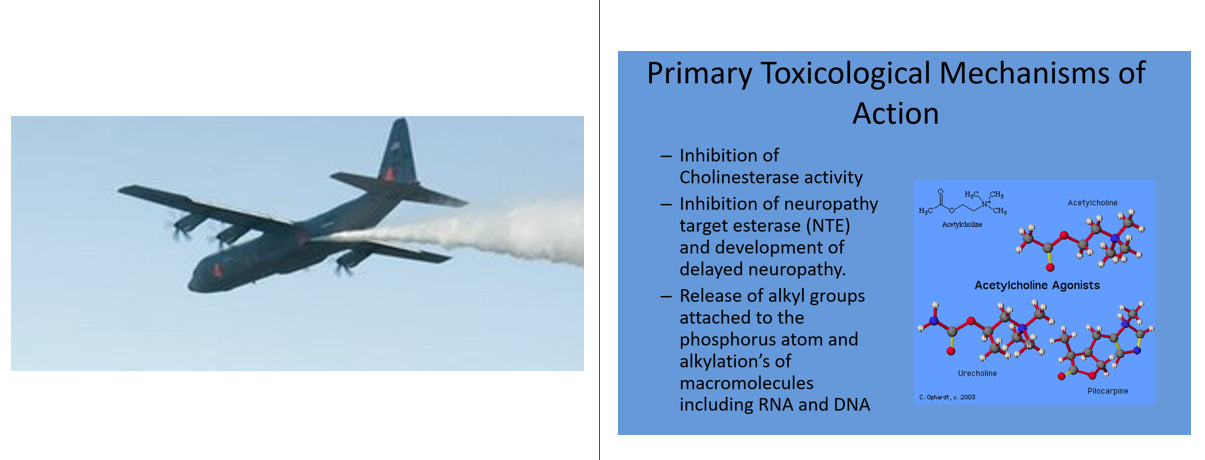
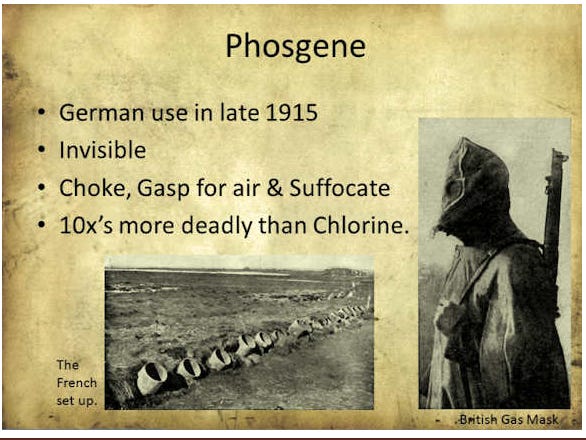

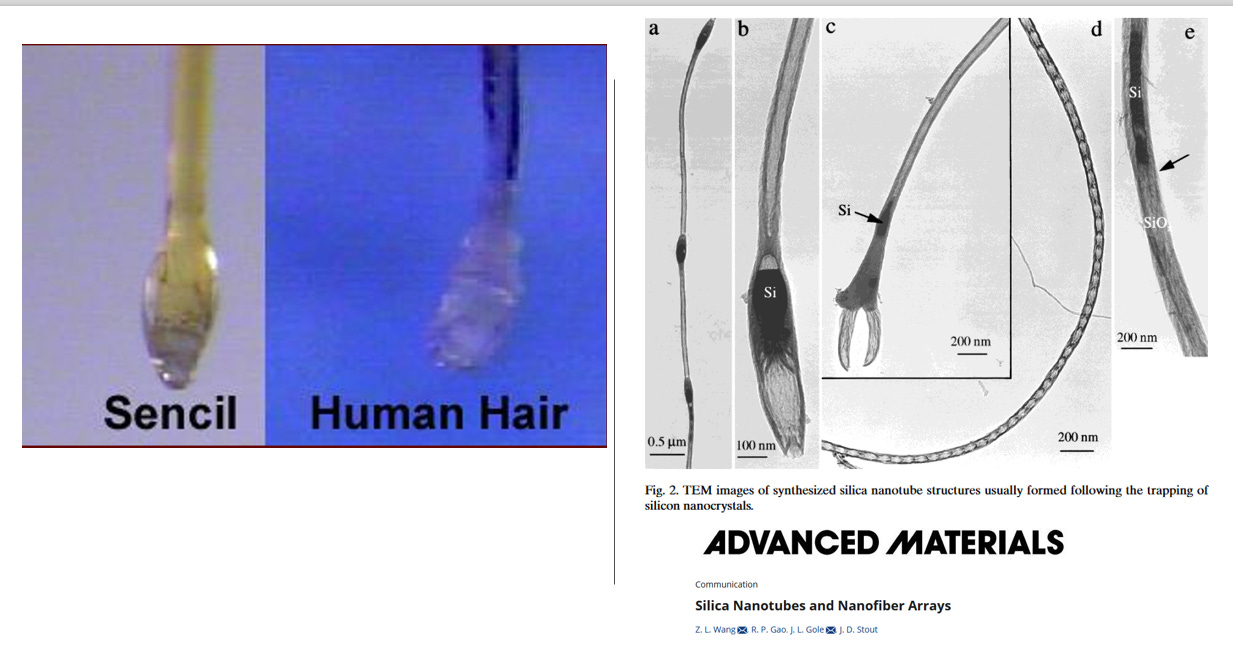
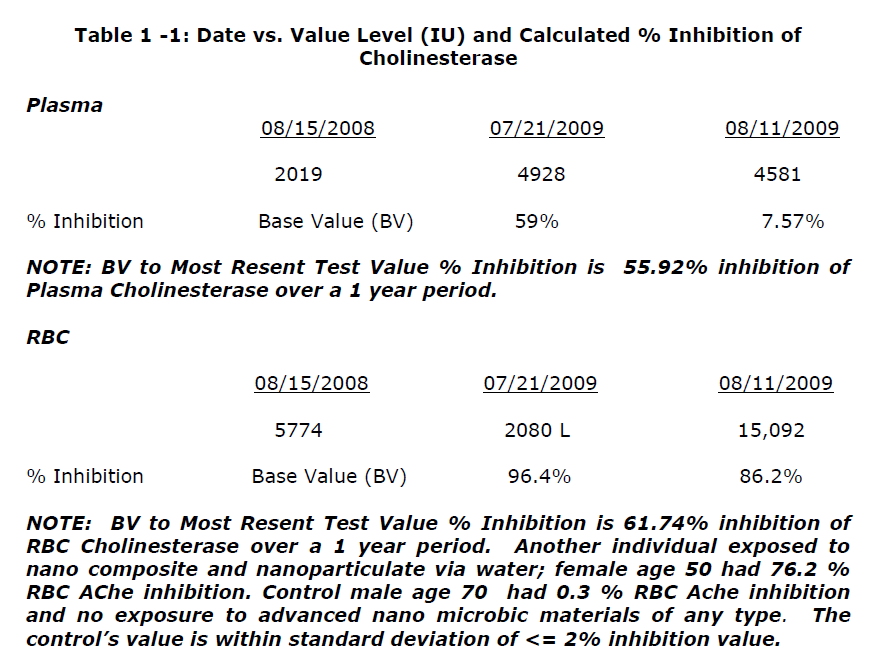
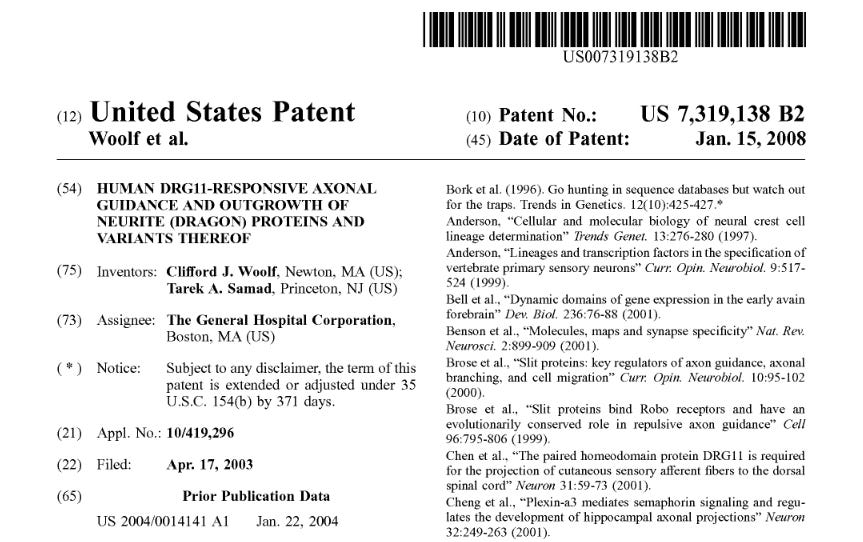
No comments:
Post a Comment